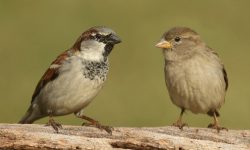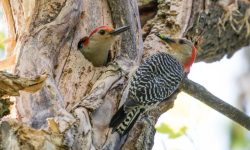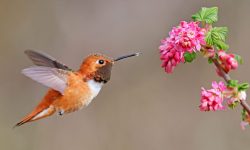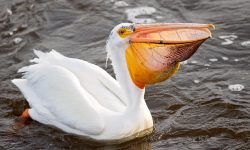Herons are elegant, long-legged birds best known for their stillness and lightning-fast strikes. Found in wetlands, along coastlines, and beside rivers, these carnivorous hunters are highly adaptable and skilled at capturing a wide variety of prey. Their diet reflects both their patience and precision, making them fascinating predators in the bird world.
Below, we explore seven favorite foods herons love to eat—and the remarkable techniques they use to catch each one.
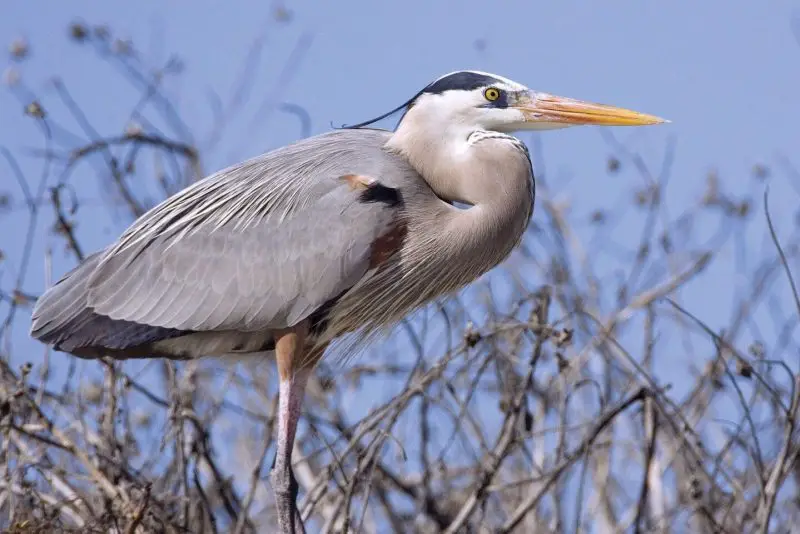
2. Frogs and Toads
Why Frogs Are a Popular Choice
For herons, amphibians like frogs and toads represent a protein-packed, readily available food source—especially in the moist, vegetated landscapes they favor. Wetlands, ponds, marshes, and flooded fields provide ideal habitat for both amphibians and the birds that hunt them.
Frogs are particularly valuable during spring and early summer, when breeding activity draws them into open areas and their numbers surge. Herons take full advantage of this seasonal abundance, as frogs are nutrient-rich, relatively slow-moving, and often gather in dense clusters, making them easy to catch and consume in numbers.
Toads are less aquatic than frogs but still fall prey to herons, especially after heavy rains, when they emerge from underground burrows and become temporarily exposed. Though their tough skin may offer some chemical defenses, herons seem largely unaffected by it.
How Herons Catch Frogs
Hunting frogs requires a combination of stealth, timing, and lightning reflexes. Herons move slowly and deliberately through the shallows or along pond edges, using their long legs to wade silently and their sharp eyes to track even the slightest movement in the vegetation.
Once a frog is spotted, the heron freezes—sometimes mid-step—allowing the amphibian to relax its defenses. Then, with an explosive jab, the heron strikes downward, grabbing the frog before it can leap to safety. The bird often tosses the prey into the air to reposition it headfirst, which makes swallowing easier and minimizes the risk of the frog escaping mid-meal.
This behavior isn’t just instinctive—it’s effective. During peak frog activity, herons have been observed swallowing multiple amphibians in rapid succession, one after another, efficiently stockpiling calories.
Certain species, such as the Green Heron and Little Blue Heron, are particularly skilled at amphibian hunting. These smaller, agile herons are experts at navigating dense aquatic vegetation, using low, creeping postures to avoid alarming their prey. Their slow, calculated movements and precise strikes allow them to hunt even in cluttered environments where frogs feel safe.
Watching a heron hunt frogs is like observing a silent game of patience and precision—each movement deliberate, each strike almost invisible until it lands. In the delicate balance of wetland life, herons are amphibian predators of the highest order.
3. Crustaceans: Crabs and Crayfish
Why Crustaceans Are Important
While many herons are best known for hunting fish, certain species—especially those living in coastal, brackish, or freshwater marshes—have adapted to target crustaceans as a major part of their diet. Crabs and crayfish are nutrient-dense, offering high levels of protein, calcium, and other essential minerals that support feather growth, egg production, and energy metabolism.
For herons like the Yellow-crowned Night-Heron, crustaceans aren’t just a supplement—they’re a dietary cornerstone, particularly in tidal estuaries or inland wetlands where crayfish are abundant. In fact, this species is so specialized that its distribution closely follows crayfish-rich areas, and juveniles begin learning to hunt them from a very young age.
How Herons Hunt Crustaceans
Catching a hard-shelled, defensive animal like a crab or crayfish requires more than just speed—it takes technique, strength, and precision. Herons search the mudflats, shallow pools, or submerged vegetation, using their keen eyesight to detect subtle movements. Crustaceans may be partially buried or hidden among rocks, but herons have the patience to scan and wait until one makes a fatal move.
Once spotted, the heron strikes rapidly, pinning the crustacean with its bill before it can scuttle away or retreat into the mud. The real challenge lies in subduing and preparing the prey: the heron uses its strong neck muscles to shake or slam the crab or crayfish against a hard surface, such as a rock or log. This repeated motion cracks the exoskeleton and immobilizes the prey.
In many cases, herons don’t pick apart the crustacean—they swallow it whole, using their digestive systems to handle the tough chitin and claws. Some birds may reposition the prey to avoid larger, more jagged parts, but many will simply gulp down the entire animal after a few well-placed smashes.
This feeding strategy is not only efficient but remarkably effective, allowing herons to exploit food resources that many other wading birds avoid. And in doing so, they carve out a unique niche in aquatic food webs—one that rewards strength, technique, and adaptability.
4. Insects and Aquatic Invertebrates
Why Insects Matter in Their Diet
Though often overshadowed by fish and frogs, insects and aquatic invertebrates play a vital role in the diet of herons—especially for juveniles and smaller species such as the Green Heron or Little Blue Heron. These prey are rich in protein, amino acids, and fat, and are crucial during the early stages of development when herons are learning to hunt and require smaller, more manageable prey.
In wetlands and flooded fields, insect life can be abundant and seasonal, making them an opportunistic and energy-efficient food source. Dragonflies, water beetles, damselfly larvae, mosquito pupae, and various aquatic bugs offer both variety and nutritional value, particularly in spring and summer.
Their Catching Technique
Hunting insects requires a different approach than spearing fish or subduing crustaceans. Insects are often tiny, fast, and capable of sudden flight or escape beneath the surface. As a result, herons rely on fine motor control, short-range precision, and quick reflexes to catch them.
Rather than using a full neck strike, herons capture insects with a sharp, dart-like peck. This allows them to pick prey off the water’s surface, from emergent vegetation, or even mid-air in some cases. In shallow water, they may stalk slowly—head lowered, eyes focused—and pluck aquatic larvae or surface bugs with delicate accuracy.
One of the most fascinating behaviors occurs in Green Herons, who have been observed engaging in true tool use. These birds have been documented dropping small objects—such as feathers, leaves, or insects—into the water as bait to lure fish or aquatic insects within striking distance. Once the curious prey approaches the disturbance, the heron seizes it with surgical precision. This level of intelligence is exceptionally rare in birds and demonstrates complex problem-solving skills.
In flooded fields, marsh edges, or ditches, herons often move slowly and deliberately, scanning for the slightest ripple or twitch that betrays an invertebrate beneath the surface. Their keen vision and ability to remain motionless allow them to approach unsuspecting prey without detection.
While these meals may be small compared to a hefty fish, their sheer abundance and ease of access make them a dependable food source—especially in warmer months or regions where larger prey is scarce. For young herons, insect hunting is also an essential training ground, building the skills they’ll need to tackle more challenging prey as they mature.
5. Rodents and Small Mammals
A Surprising but Nutritious Meal
While herons are closely associated with wetlands and aquatic prey, some species—especially the Great Blue Heron—display remarkable dietary flexibility by hunting small terrestrial mammals. These include mice, voles, shrews, and even young rabbits, particularly during colder months or drought conditions when fish, frogs, and other typical prey are harder to find.
This shift to land-based prey demonstrates the heron’s opportunistic feeding strategy and remarkable ability to thrive in diverse habitats, including meadows, pastures, and agricultural fields adjacent to water.
Though rodents may not be a heron’s first choice, they offer substantial caloric rewards. Mammals are rich in fat and protein, providing energy critical for thermoregulation during winter or for supporting large adult herons that require more sustenance.
How Herons Hunt Mammals
Unlike the still-water patience herons use to stalk fish, mammal hunting calls for a more dynamic, visually responsive approach. These birds rely on their exceptional vision, scanning grasslands and field margins for any hint of movement. A twitch of grass or the darting motion of a vole is enough to trigger a fast, calculated strike.
The heron may advance slowly or freeze in place, waiting for the rodent to emerge. Then, with an explosive step and a downward jab, it snatches the mammal in its bill. Given the risk of struggle or injury from biting rodents, the heron immediately shakes the prey violently or strikes it against the ground to stun or kill it.
Most small mammals are swallowed whole and headfirst, which aligns with the heron’s instinct to reduce resistance from limbs or fur during ingestion. This process can look almost shocking to observers unfamiliar with the heron’s dietary breadth, but it’s a natural extension of their raptorial skillset.
In some cases, herons have been seen hunting along fencerows, barn edges, or even urban parks—demonstrating how they take advantage of human-altered landscapes to access new food opportunities.
This dietary expansion highlights the heron’s status as one of the most versatile and opportunistic wading birds in North America. Their ability to shift between aquatic and terrestrial prey, depending on availability, is a key reason they flourish in environments from isolated wetlands to city edges—wherever a meal presents itself.
6. Reptiles: Snakes and Lizards
Why Reptiles Appear on the Menu
Reptiles may not be the most common item on a heron’s plate, but when conditions are right, they become valuable and opportunistic prey. In regions where wetlands transition into warmer, drier habitats—such as southern marshes, riparian zones, or sun-drenched meadow edges—herons occasionally target garter snakes, small water snakes, skinks, and basking lizards.
These reptiles are rich in protein and fat, offering high energy returns for skilled hunters. While less predictable than fish or amphibians, reptiles become more accessible during hot weather, when they are more active and visible as they bask on rocks or shorelines. In times of prey scarcity—such as during droughts or in degraded wetlands—herons may expand their diet to include these cold-blooded creatures.
How Herons Handle Reptiles
Catching a snake or lizard requires a different kind of finesse and caution. Unlike fish, which are often slippery but predictable, reptiles can bite, thrash, and coil, posing a challenge—even a danger—for the heron. Some snakes may even be mildly venomous, and even non-venomous species can defend themselves with sharp bites or constriction.
To reduce risk, herons approach snakes slowly and deliberately, using their exceptional eyesight to track every movement. The strike is calculated: the bird aims to pin the snake behind the head with a precise jab, effectively neutralizing its ability to strike back. Once secured, the heron often lifts the snake and slams it against the ground or a rock, repeating this until the reptile is limp or incapacitated.
The same technique applies to lizards, though they are usually smaller and easier to subdue. In some cases, herons may play with their prey—repositioning it several times—before swallowing it whole, usually headfirst to prevent limb resistance or regurgitation.
Because reptiles are often found in drier, sunlit areas, herons that successfully target them must be willing to leave the water’s edge—an uncommon but not unheard-of behavior. The Great Blue Heron, in particular, is known for venturing into fields, forest glades, and even roadsides in pursuit of reptilian prey.
Though reptile hunting is far from routine, it highlights the heron’s adaptability and predatory intelligence. These birds are not limited by habitat or expectation—they are opportunists with strategy, capable of turning even a venomous wriggler into a nourishing meal with speed, strength, and surgical precision.
7. Birds and Eggs
Rare but Not Unheard Of
Though herons are primarily known for consuming cold-blooded animals like fish, frogs, and insects, some species—particularly the Great Blue Heron and Black-crowned Night-Heron—have been documented preying on other birds and their eggs. While this behavior is uncommon, it tends to occur in periods of prey scarcity, during the breeding season, or in high-density nesting areas, where opportunities to target vulnerable chicks or eggs are more frequent.
Nestlings and fledglings are nutrient-rich, soft-bodied, and generally defenseless, making them a tempting high-reward meal for a hungry heron—especially when fish are scarce due to drought, ice cover, or competition.
Prey species may include ducklings, baby coots, small songbirds, and even chicks of other wading birds. Eggs are also consumed when discovered, often swallowed whole or pierced with the tip of the bill.
Their Hunting Behavior
Heron predation on birds is typically opportunistic rather than habitual, but it reveals a ruthless efficiency that often surprises even seasoned birders. The heron begins by quietly stalking through a nesting colony or wetland edge, using its height and slow gait to remain undetected. When a target presents itself—a parent leaves a nest, a chick strays from cover—the heron strikes swiftly and decisively, grabbing the bird in its bill.
Small chicks are often swallowed alive and whole, while larger ones may be subdued through shaking or striking against the ground. Some herons have even been observed climbing into low shrubs or onto branches to reach eggs or nestlings—behaviors that push the boundaries of what we expect from a wading bird.
Though unsettling to witness, this behavior is part of the heron’s evolutionary toolkit. As opportunistic carnivores, herons exploit what the environment provides. Their willingness to consume fellow birds—though rare—underscores their adaptive resilience in the face of hunger or ecological stress.
In ecosystems where herons nest alongside other waterbirds, such as marshes crowded with coots or blackbirds, this predatory behavior may be more commonly observed. It serves as a stark reminder that nature does not operate by human morals—only by survival, efficiency, and adaptability.
Conclusion
Herons are far more than elegant silhouettes in a marsh—they are intelligent, adaptable predators with a diverse and often surprising diet. Whether spearing fish, stalking frogs, or shaking crabs against rocks, these birds exhibit extraordinary hunting skills tailored to each type of prey. Their success across ecosystems, from urban lakes to coastal estuaries, stems from their ability to observe, adapt, and act with surgical precision.
Understanding what herons eat—and how they catch it—not only deepens our appreciation for their role in the ecosystem but also reveals a more complex and fascinating side of their behavior than many realize.

